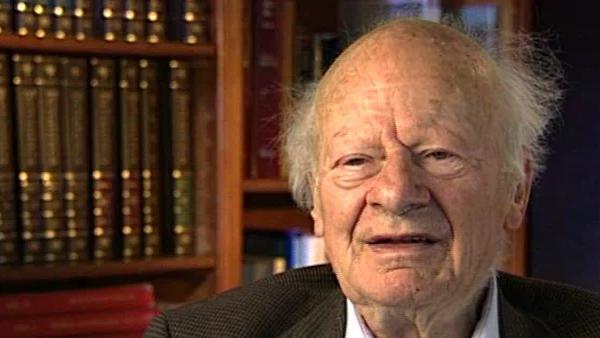NEXT STORY

Fermi postulates the beta-decay theory: Fermi's interaction
RELATED STORIES

NEXT STORY

Fermi postulates the beta-decay theory: Fermi's interaction
RELATED STORIES



Alpha radioactivity, that is the emission of helium nuclei by natural radioactive nuclei, had been well explained by Gamow, but beta radioactivity was a different matter entirely - in two ways. For one thing beta particles, that is an electron, can really not exist in a nucleus. As I said earlier, its wave length is about a hundred times the radius of the nucleus. And secondly the electrons come out with varying energy, because beta rays don't have a definite energy for a given radioactive nucleus, but they go all over the map up to some maximum energy. And that seemed queer enough, so that Niels Bohr had the idea that maybe conservation of energy doesn't hold in this case. Pauli, who always, was very strict and held to the laws of physics said 'That's nonsense. Even if you, Niels Bohr, said it, it still is nonsense. Energy must be conserved and so we have to assume that the... in beta radioactivity another particle must also be emitted, and that particle must be neutral, have no charge, must be invisible because it has no charge, and he... and part of the energy goes to the electron and part to the neutrino. And that way also we can conserve spin; namely we know that all nuclei with even atomic weight have... have integral spin and so if they then emit an electron when an electron has a spin of a half, how can that be? We need another particle of spin of a half so that the new nucleus which still has even atomic weight can again have integral spin.'
The late German-American physicist Hans Bethe once described himself as the H-bomb's midwife. He left Nazi Germany in 1933, after which he helped develop the first atomic bomb, won the Nobel Prize in Physics in 1967 for his contribution to the theory of nuclear reactions, advocated tighter controls over nuclear weapons and campaigned vigorously for the peaceful use of nuclear energy.
Title: Work on beta radioactivity
Listeners: Sam Schweber
Silvan Sam Schweber is the Koret Professor of the History of Ideas and Professor of Physics at Brandeis University, and a Faculty Associate in the Department of the History of Science at Harvard University. He is the author of a history of the development of quantum electro mechanics, "QED and the men who made it", and has recently completed a biography of Hans Bethe and the history of nuclear weapons development, "In the Shadow of the Bomb: Oppenheimer, Bethe, and the Moral Responsibility of the Scientist" (Princeton University Press, 2000).
Tags: George Gamow, Niels Bohr, Wolfgang Pauli
Duration: 2 minutes, 50 seconds
Date story recorded: December 1996
Date story went live: 24 January 2008